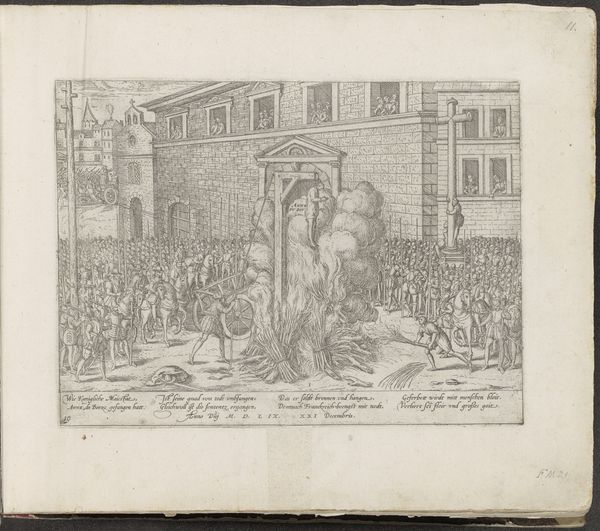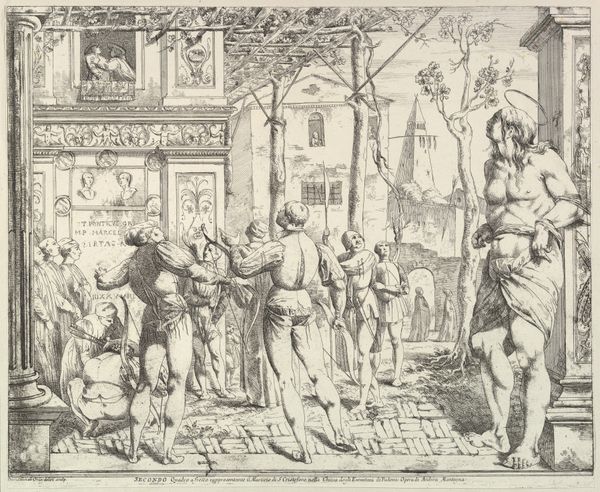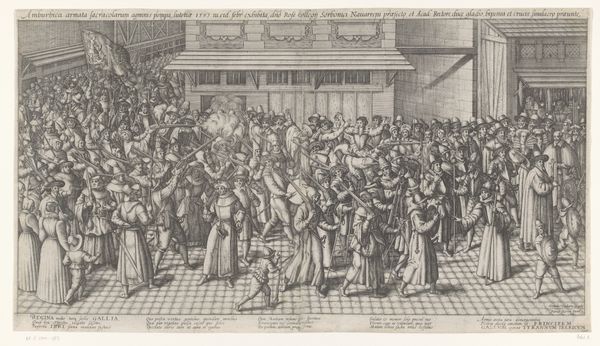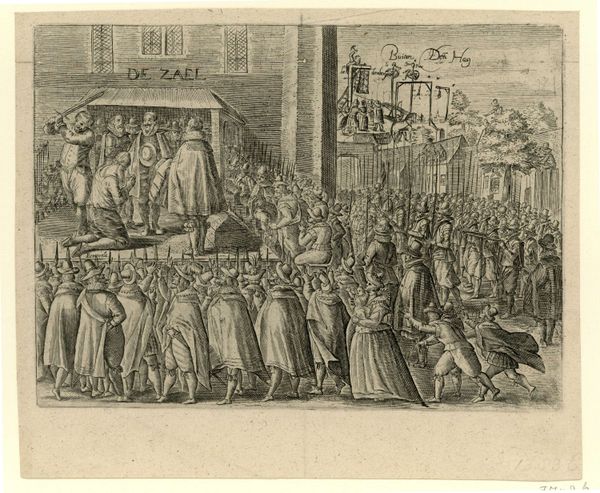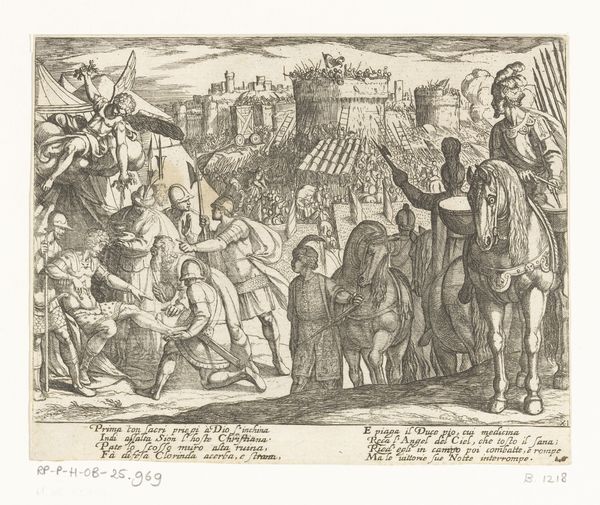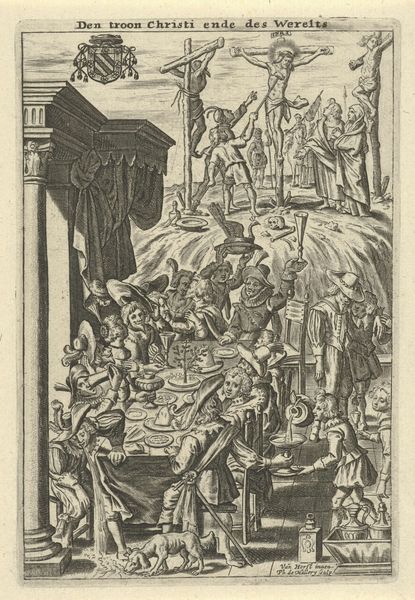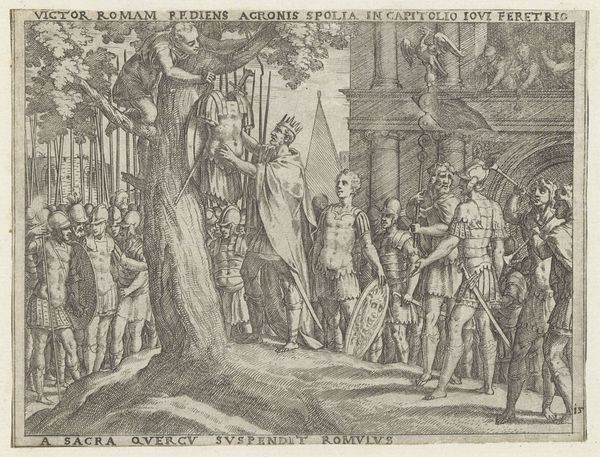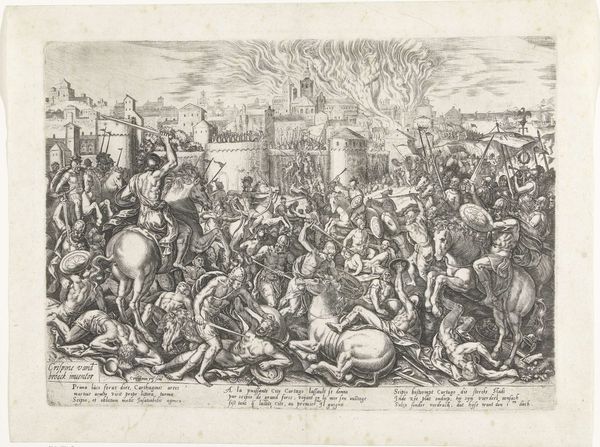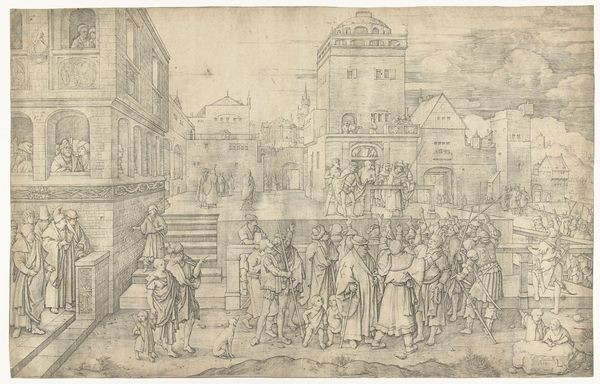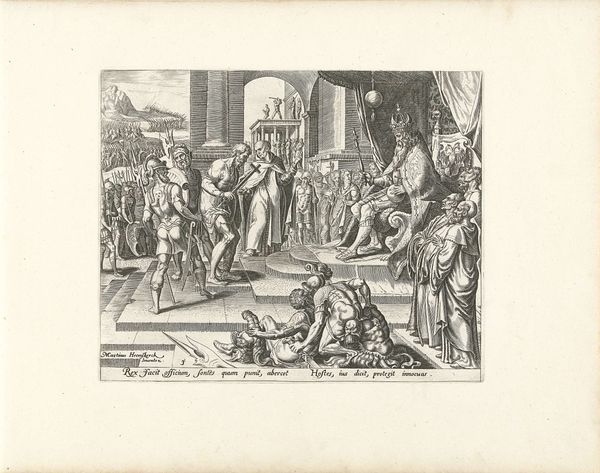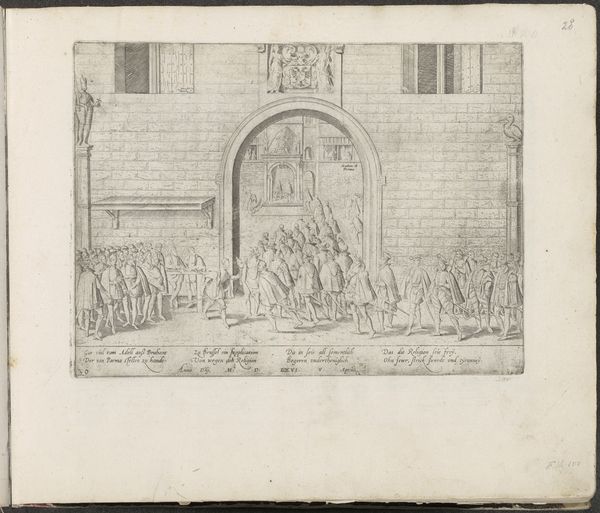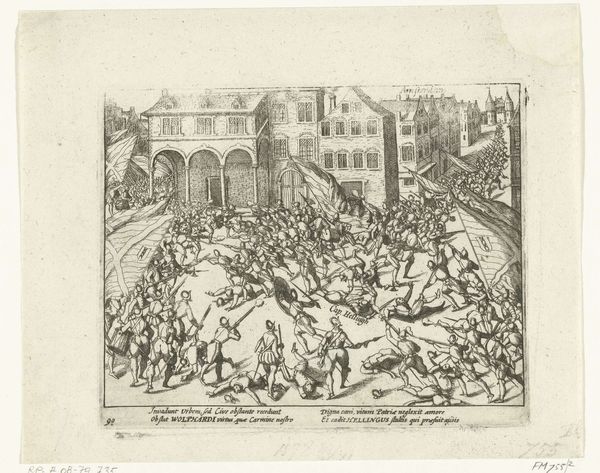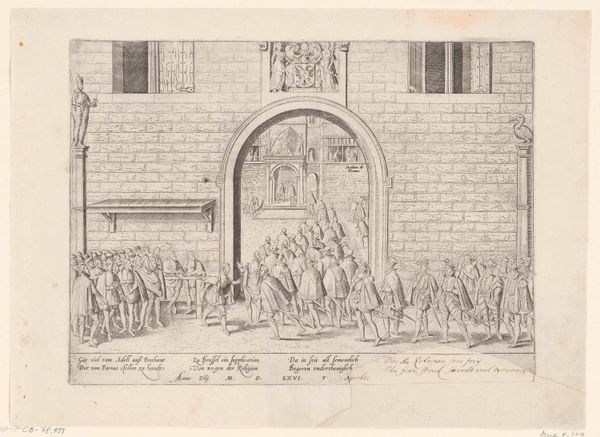
drawing, print, engraving
#
drawing
#
medieval
#
narrative-art
#
pen drawing
# print
#
pen sketch
#
figuration
#
11_renaissance
#
line
#
history-painting
#
engraving
Dimensions: height 377 mm, width 505 mm
Copyright: Rijks Museum: Open Domain
Editor: This engraving, titled "Terechtstelling van Anne du Bourg, 1559," was created around 1570 by Jean Perrissin. It depicts what appears to be a public execution, perhaps even a burning at the stake. It's stark and incredibly detailed. What do you see when you look at this piece? Curator: I see the enduring power of images to record trauma and broadcast ideology. Consider the flames, the smoke obscuring the central figure – they are not just descriptive but symbolic. Fire cleanses, yes, but here it primarily obliterates, erases a dissenter from public memory, according to the ruling powers. Editor: So the act of burning has multiple meanings? Curator: Exactly. And observe the crowd – impassive faces gazing from the windows of imposing structures and the stern soldiers on horseback, weapons held aloft. Their expressions reflect not necessarily personal conviction but the cold machinery of the state at work. The building almost becomes a symbol of judgement. Does the cross indicate anything about the symbolism of justice in this time? Editor: I guess it points towards religious motivations of some sort. Curator: Indeed. The symbols speak to a society wrestling with religious and political upheaval. Anne du Bourg was a judge executed for his Protestant beliefs. This image isn’t just a historical record, it is a statement and also a cautionary tale, laden with the anxieties of a fractured society attempting to enforce religious uniformity. The enduring nature of these kinds of graphic works has definitely left an impression on society, don't you think? Editor: I completely agree. It really highlights how art can be both a document and a powerful form of rhetoric. The symbolic power is incredibly clear and resonant. Curator: Absolutely. It reminds us that images are rarely neutral; they carry within them layers of meaning and intent, reflecting the cultural and psychological landscape of their time.
Comments
No comments
Be the first to comment and join the conversation on the ultimate creative platform.
